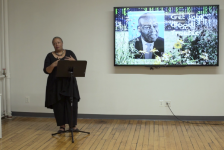1st: Determine which LEED credential you want to achieve.
In order to receive the proper LEED training, you need to decide which LEED credential is right for you. There are currently two levels of LEED credentials: LEED Green Associate and LEED Accredited Professional. Think of the levels as if they were a high school diploma and bachelordegree; you must obtain onefirst before you can obtain the other. The LEED Green Associate credential is the first, more general, level like a high school diploma. The LEED Accredited Professional credential is the next, more technical, level like a bachelor degree.
You must first pass the LEED Green Associate exam before you can take a LEED Accredited Professional exam.
2nd: Ensure you are eligible to take a LEED exam.
In order to be eligible to take the LEED Green Associate exam you must have experience in at least one of the following forms: involvement on a LEED project, employment in a sustainable field of work, or engagement in an education program that addresses green building principles. If you do not currently meet any one of these three options, it is easy to become eligible by engaging in an education program that addresses green building principles. For example, if you take an online course with Planet Principles you will receive a Certificate of Completion to submit with your LEED Green Associate exam application so you will be eligible for the LEED exam.
In order to be eligible to take a LEED Accredited Professional exam you must have been involved with a LEED project within three years of the date you apply to take the LEED AP exam. This experience must be documented in LEED Online or in the form of a letter of attestation that describes your involvement on the LEED project.
For more information about eligibility requirements, visit the Green Building Certification Institute (GBCI) website. GBCI oversees the development of all the LEED exams and is in charge of the LEED credentialing process.
3rd: Decide how to prepare for your LEED exam.
The primary sources used to develop the LEED exams are the Reference Guides for each LEED Rating System. Each LEED Reference Guideisover 500 pages in length; therefore, many people choose to purchase a LEED exam prep program to ensure they have studied all the correct information. It is also important that your LEED training experience provides you with the skills necessary to apply what you have learned in your field of expertise.
When trying to decide what LEED exam prep solution is right for you, view samples of the product you are interested in to ensure you are getting the right solution for your individual study needs. There are many different options available in the marketplace, so it is important that you see a demo before purchasing a LEED exam prep course to ensure you are getting a good product. For example,Planet Principles’ LEED training program offers a sneak preview of their online courses, plus they provide practice exams and flash cards to prepare you exam day.
4th: Apply for your exam and schedule your exam date.
You must apply to take your exam at GBCI’s website. Once you are approved to take the exam, you will be given an eligibility ID number. Use this number to schedule a time to take you exam at a local Prometric testing center. Prometric is a testing center that provides many different computer-based exams in locations all over the United States. Don’t stress overscheduling your exam because LEED exams are offered almost every day of the week during normal business hours at your local Prometric testing center.
Each LEED exam is given on a computer and is comprised of 100 randomly delivered multiple-choice questions. You are given 2 hours to complete a LEED exam.
5th: Pass your exam and earn your LEED credential!
If you pass the LEED Green Associate exam then you will earn the LEED Green Associate credential. This credential denotes basic knowledge of green building principles and practices required in the LEED Green Building Rating System.
If you pass the next level exam, LEED Accredited Professional, you will become a LEED Accredited Professional (LEED AP) under the specialty exam you chose to take. Before you take a LEED AP exam you must first decide which LEED Rating System you want to specialize under. There are five different options: Building Design & Construction, Homes, Interior Design & Construction, Operations & Maintenance, or Neighborhood Development. You will be tested over the specialty you choose. For instance, if you choose to specialize as a LEED AP for Homes then you will have to demonstrate your technical knowledge and skill in understanding the LEED for Homes Rating System and must also demonstrate you ability to facilitate the LEED for Homes project certification process. The LEED AP exam is a lot more technical in nature than the LEED GA exam. For example, the LEED AP: Homes exam will specifically test your knowledge overdocumentation and calculation requirements for each credit or prerequisite in the LEED for Homes Rating System; the LEED GA exam will just test your general understanding of common sustainable strategies that are used in the green building industry.
6th: Receive your official certificate as a LEED Professional.
Upon passing a LEED exam, an official LEED Professional Certificate with your name on it will be mailed to you and your name will be listed in the database of LEED Professionals with the corresponding level of expertise (LEED GA or LEED AP) you have achieved as a result your LEED training.










